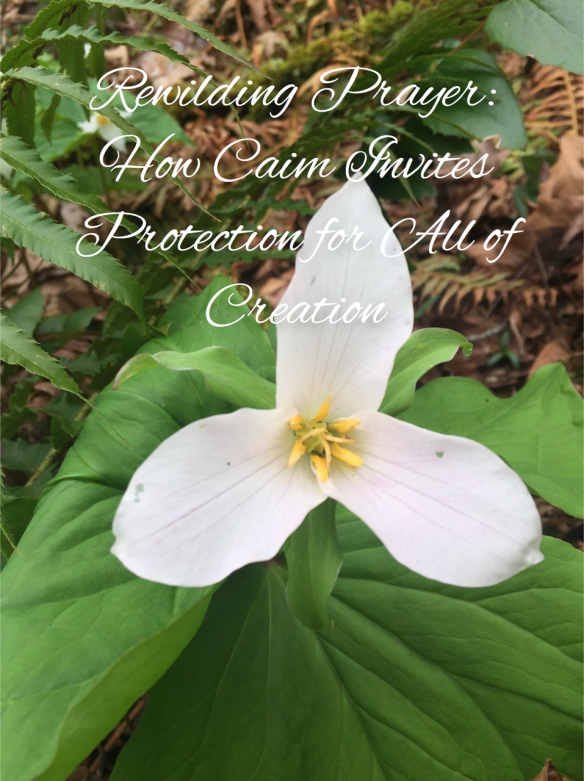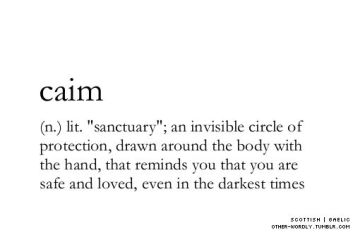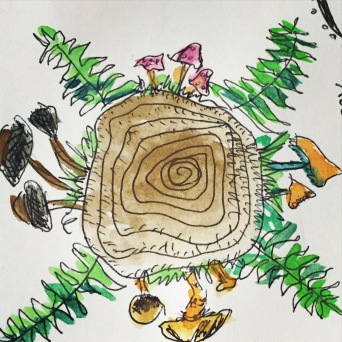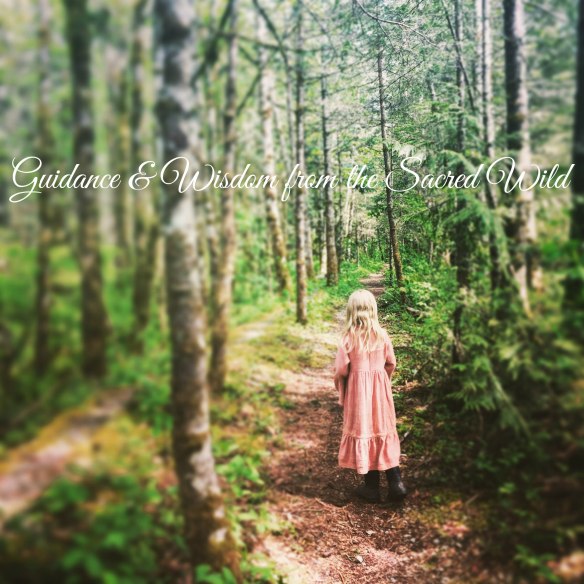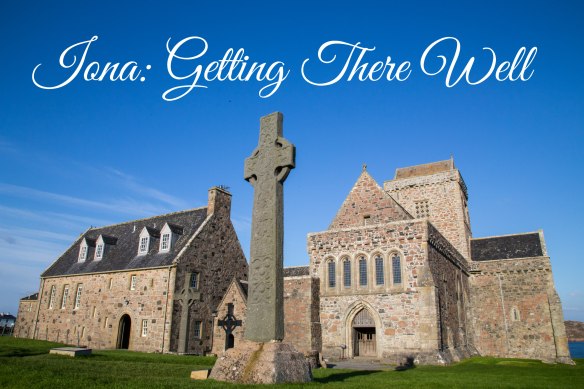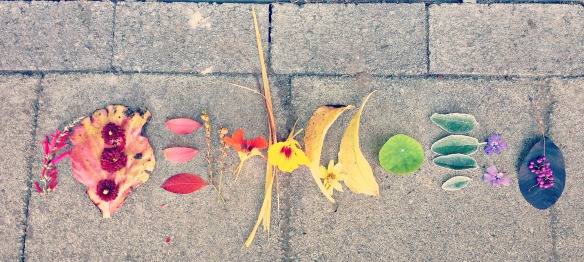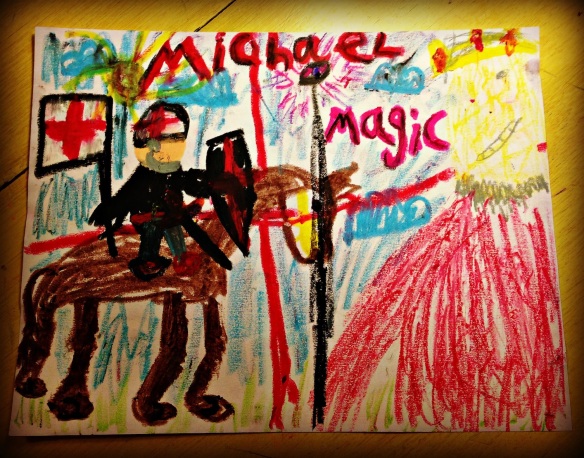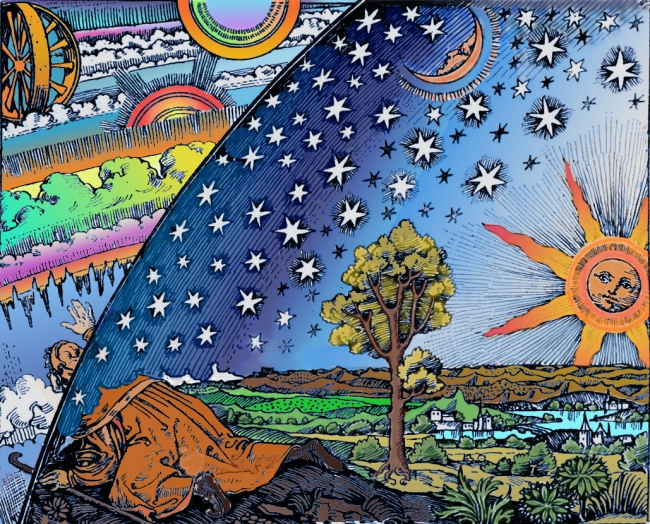 Friends,
Friends,
On this Day of Epiphany, and before my next term at school holds my time hostage once again, I wanted to take a moment to share some of the emerging thoughts that have been personally prominent these past few months. As we take time today to reflect on the legendary Three Wise Men, kingly magis who had deep knowledge of the links between the Divine and the cosmos, may we too ponder how we invite our celestial neighbors to inform our sense of awe of the Grand Story in which we continue to participate.
I returned to seminary with an understanding that I needed a framework of academy and community to speak into inklings and intuitions that I have based my vocational experiences upon. My work of the last 10 years has been based on ideas that promote living on behalf of the Other and the Future as a way of delving into a meaningful life that furthers the peace of heaven on earth. These reflections have led me to actively engage our urban neighborhood in a call to see our local urban forest as both “other” and the future in that there has been a traditional treatment of this land that is akin to oppression, misalignment, marginalization and fear. My hunch over the last many years has drawn connections with how we treat our native landscapes and how we treat one another. It is no longer a surprise that this particular Southeast Seattle forest is also one that is stymied by outdated models of conservation and policies that have prevented and prohibited access by the City’s most diverse and traditionally underserved community.
This is all to say, the intersection of urban place, the environment, and how this all informs our spiritual identity has been driving my academic pursuits, and will continue to be the lens from which I look at my learnings and studies. I would like to share with you all my “Theological Anthropology” paper that was assigned for one of my courses last term. Yes, this is a vulnerable display of my academic blunderings, but my desire is to stay transparent with my Waymarkers community in what I’m learning, and where, I (and this on-line community) is heading in the future. I would love to hear your thoughts and reflections on this paper! With that, please do read on with great grace for my professional attempts. Perhaps a bringing along cup of tea would assist in the softening of the reading! And may this be an invitation for us all to be like the Three Wise Men, and continue to look up to the stars as guidance for our journey on the soil of this good earth below.
A Theological Anthropology: Loving Your Neighbor Well Through the Land
Different faith traditions from all over the world uphold the basic tenants of The Golden Rule or the ethic of reciprocity. Echoes of this wise code, from Hinduism (“Treat others as you would yourself be treated.”) to Native American spirituality (“Live in harmony, for we are all related.”), carry a similar semblance of the demand that people treat others in a manner in which they themselves would like to be treated (Princeton University, Ethic of reciprocity, n.d.). The intrinsic morality that is bound in this maxim, as delivered by YHWY in Leviticus 19:18, “Love your neighbor as yourself: I am the LORD,” contains essential attributes of the way humanity is called to live in connection with the Creator through kinship with others on this planet. The triune nature of the Trinity makes God’s self known through diversity in relationships with the other and revelation through Nature, and subsequently models and informs how one lives wholly and well in intentional relationship with other people and things. It is through the mutual respectful engagement of all living things—be it neighbor or nature—that a justice-oriented response to living occurs; one that discovers and responds to the goodness of God through the integrated presence, and subsequent love, of the other and the natural world.
The Western Judeo/Christian ethical standard to love one’s neighbor as one’s self demands that one exists fully and well when in relationship with human beings and other living things for it is in the exposure and experience with others that God is encountered. With the call to love one’s neighbor as much as one’s self, there is an inherent challenge to enter into a degree of relationship that removes the other from a place of isolated alienation to a place in the community, even to the extent of being the one who literally lives next door. By use of the glaring call within Jesus’ story of the Good Samaritan in Luke 10:29, Guitiérrez (2000) courageously claims that love for God is activated by loving the neighbor, particularly the wounded or needy (p. 149). Guitiérrez dares people of faith to see the neighbor as someone other than the like-minded person with whom one shares similar dreams and passions, and adjacent real estate in a suburban cul-de-sac. He states, “The neighbor is not the one whom I find in my path, but rather the one in whose path I place myself, the one whom I approach and actively seek” (Guitiérrez, 2000, p. 153). Based on an intentional relocating of the other, or relocating to become neighbors to the other, one can shift objectifying macro-perceptions to the personal, integrated stuff of one’s very own lives, and lean into the dynamic lifestyle of transforming Other to Neighbor to Self where the self-preservation with which one is born is willfully desired for all who live and exist.
This justice-oriented approach of integrating the other into one’s daily life finds theological grounding in Jürgen Moltmann’s (1993) ecological doctrine of creation. The monotheistic standpoint of God resulted in a historical perception of a God that was disconnected from the created world, but maintained a powerful presence as ruler and owner of all therein. Moltmann (1985) states, “As a result, the human being—since he was God’s image on earth—…was bound to confront his world as its ruler” (pg. 1). As dominator, the human being could be excused from a relationship with all of creation and move into roles of objectifier and oppressor. This role as ruler, which again allowed the human to relate to a monotheistic God, justified actions against anyone other-than-himself and an exploitative use of the earth and its resources. This way of understanding God clearly has ill effects on the globe and its community; therefore Moltmann (1985) offers a Trinitarian perspective of God that binds all of humanity and creation in a relationship created for the common good:
If we cease to understand God monotheistically as the one, absolute subject, but instead see him in a Trinitarian sense as the unity of the Father, the Son and the Spirit, we can then no longer, either, conceive his relationship to the world he created as a one-sided relationship of domination. We are bound to understand it as an intricate relationship of community.
(p. 2)
The Trinitarian nature of God provides a relational model that mandates a knowledge and understanding of the other, and a relationship that results in a bond from stranger to that of neighbor.
This transformational process is made available because of the incarnational nature of God and the Christian’s call to embody Christ. The nature of God is relational as seen in the Trinity; therefore we are bound to understand God in relationship with community. Barsness (2006) understands this relational encounter as hallowed when he states “Our relationships must be held sacred, for it is the nature of God to reveal himself incarnationally” (p. 45). It is in relationship with others, where Christ is embodied, and where humanity becomes the Imago Christi. So, when care is extended for others, it is Christ caring; when forgiveness is offered, it is Christ forgiving; when reconciliation is engaged, it is Christ healing and reconciling through the embodiment of the human experience. To dispense God’s healing and wholeness through encounters with others, to be present to their pain and needs requires a physical presence to those wounded places and people. Martin Buber (1970) would say, “God is present when I confront you. But if I look away from You, I ignore him. As long as I merely experience or use you, I deny God. But when I encounter You I encounter him (p. 28). It is in this call to the genuine encounter with another human being or life with nature (Buber, 1970, p. 57) that Moltmann’s (1985) doctrine of creation and Guitiérrez’s (2000) liberation theology weave together into a critical challenge for humanity in the 21st century; the future of fecund life on this planet will be determined by the ability to extend justice and love for neighbor to include the rights of the earth and the greater community of things with whom life is shared on this planet. Indeed, to be an image-bearer of the Imago Christi involves loving respect for all of God’s creatures.
Moltmann (1985) states, “The dignity of human beings is unforfeitable, irrelingquishable and indestructible” (p. 33). To see the human in a state of inherent goodness transforms how one views the other and has vast implications for how relational engagement ensues. To stand with an understanding of created dignity invites one to seek out the Divine in one another; we are challenged with the beauty of truly encountering the Imago Dei in others in our neighborhood. Furthermore, this posture of dignity has implications for the planet and beyond. Aquinas says: “God wills that humans exist for the sake of the perfection of the universe” (as sited in Fox, 2011, p. 28). This same inherent goodness can be applied to the natural world, which also participates in worship and adoration of the Creator God. Aquinas also stated:
Because the Divine goodness could not be adequately expressed by one creature alone, God has produced many and diverse creatures so what is wanting in one in the representation of divine goodness might be supplied by another. Thus the whole universe together participates in the divine goodness. (p. 28)
This is a celebration of the diverse order of created things and underscores the importance of a relational view of the diversity of the Trinity. This perspective also recovers a sense of the sacred in local neighborhoods and the greater landscapes beyond by acknowledging the inherent goodness and revelatory means of Creation. However, implicit in the genuine encounters available with the other on a sidewalk or forested trail, is the need to rediscover the vastness of God’s immanence beyond our world. There is a need to recover a sense of this grand divine cosmos, a whole in which all of humanity participates as image bearers of God.
The Imago Christi participates in this elaborate perspective as well. Cultural historian and spiritual ecologist Thomas Berry (1987) is explicit in placing his vision in the lineage of the Cosmic Christ, which is written of in John’s Gospel (Christ as the ‘light in all things’). He writes:
If Saint John and Saint Paul could think of the Christ form of the universe, if Aquinas could say that the whole universe together participates in the divine goodness more perfectly and represents it better than any single creature whatever, and if Teilard could insist that the human gives to the entire cosmos its most sublime mode of being, then it should not be difficult to accept the universe itself as the primordial sacred community. (p. 38)
This is a clear and grand picture beyond the anthropocentrism from which the Christian consciousness needs to depart; a move in this direction not only affirms the dignity of humanity, but that of the other, which includes the vast and great cosmic community of which our planet is a part. This is a bold movement from seeing God as the absolute subject, which increasingly stripped God of his connection with the world (Moltmann, 1970, p. 1).
The effects of a monotheological thought regime has wreaked havoc on the marginalized and on our planet. In fact, it could be argued that geoengineering (the intentional large-scale modification of the earth and weather patterns by dominating humans) schemes have become uniformly disastrous as we see the heart-wrenching effects of damming and deforestation on our planet and within our communities (Jenson, 2013, p. 11). McFague (2002) provides a helpful theological framework of traditional models of the God-world relationship and why these models result in thought patterns and behaviors that are detrimental to the earth, the greater community of things, and ultimately, even personally. She suggests a critical shift to the agential model by asserting that the world is God’s body (p. 40). To understand this in light of Buber’s (1970) life-with-nature relational sphere allows one to fully accept and engage the natural world as revelatory (p. 58). While Buber would have understood this relation to be with individual animals, rocks, or elements, this intentional awareness of the potential of a genuine encounter with the natural world is evidenced when he writes, “something lights up and approaches us from the course of [its] (the tree) being” (Kramer, 2003, p. 52-53). During an I/Thou encounter with a natural thing, there is the unique particularity of the thing that “speaks;” this is relational evidence that the created world emanates from the Creator. The resulting effect of Buber’s (1970) relational sphere with the natural world and McFauge’s (2002) agential model offers freedom to live fully and transformational into local neighborhoods, thus affecting global trends.
To divorce God’s presence from the created world has had profound effects on the human and community experience. The resulting disconnect from nature can be seen the world over; while it is evidenced in the power-over posture that has resulted in geoengineering sciences, it is also evident on local levels in how traditional cities have been designed with little access to Nature in mind. “People with less access to nature show relatively poor attention or cognitive function, poor management of major life issues, poor impulse control,” says Frances Kuo, a professor at the University of Illinois, adding that humans living in a neighborhood stripped of nature undergo patterns of social, psychological, and physical breakdown similar to those observed in animals deprived of their natural habitat. “In animals, what you see is increased aggression, disrupted parenting patterns, and disrupted social hierarchies” (Louv, 2013, n.p.). One cannot live the designed life of wholeness and health without engaging the natural world. There is a profound link between how one engages creation and subsequently treats the other, and their neighbor.
The resulting negative psychological implications of removing access to nature in urban communities has been noted and strong voices are now coming to the table to encourage urban leaders and designers to re-imagine how to integrate natural and wild landscapes into cities and neighborhoods. Richard Louv (2013), the author of the renowned book Last Child in the Woods, also contests that genuine encounters with the natural world will have profound effects on our communities on neighborhoods. Note his list of the seven comprehensive effects of access to nature on communities: improves psychological health, may help reduce domestic violence, natural playgrounds may decrease bullying, encountering other species help children develop empathy, greater biodiversity in cities can increase social and family bonding, and more nature in one’s life can offset the dangerous psychological impact of climate change (Louv, 2013, n.p). There is something physiological that occurs within the human when exposed to the unpredictable environment; the body, mind, and spirit positively reacts when experiencing the earth beneath their feet and the euphoric effects impacts not only the individual, but also the community for good. Creation is designed to be revelatory and provides not only the environment for a genuine encounter with God, but also is the context for where people engage others in a sacred space of dialogue. Jones (1985) speaks to this socio-wilderness dynamic when he says:
Without the occasional abrasive brush with the unexpected, human life soon becomes a mere matter of routine; and, before we know where we are, a casual indifference and even brutality takes over and we begin to die inside. The shock breaks open the deadly ‘everydayness’ that ensnares us and brings something awesome and terrifying to our reluctant attention: the believer’s name for that ‘something’ is God. (p. 84)
Clearly, there is something of the essential goodness of God that is bestowed on God’s creation for the effects of natural environments to have such profound effects on a person. To not have exposure and experience with nature can lead to the brutal posture that objectifies and exploits the other. To see the inherent goodness in nature and its intended presence in the lives of humanity leads to a therapeutic stance that acknowledges how the surrounding landscapes can participate in the healing and wholeness of individuals and communities. The mysteries of God will be better accommodated when we recalibrate God’s creative landscape to include planet earth and every creature that lives here.
Our neighborhoods are never singular communities, but are actually a mesh of myriad overlapping networks. We all belong to many different communities, from the diffuse (i.e. a professional association, or an online message board), to the intimate (i.e. a family, or a group of friends). In consideration of the paramount impact of how a landscape informs an individual and how they connect to the other in their community, there is an emerging theory called “Placemaking” that aims to create a balance of uses in public spaces that serve the many communities at once; in this way a landscape can serve as a therapeutic response to the needs of a neighborhood. A single place can’t do everything at once, so “Placemaking” prompts us to look for convenient and clever ways to make limited space serve multiple functions. De Botton and Armstrong (2013) have suggested that by balancing ones need with those of the people by which one lives, one finds their place, literally and figuratively, within a community of neighbors. By inviting the presence of a place to participate in the lives of communities for a common good, there is an acknowledgment of something profound and beyond human-limitations that is unleashed: God moves back into the neighborhood!
The challenge of loving and caring for one another well in the 21st century requires one to recover a primordial sense of the vast mystery of God and apply that energy to paying attention to the earth. Our love of neighbor needs to be extended to the greater community of things on this planet and our neighborhood needs to considerably broaden to include our universe as well. Historically anthropocentric views have concerned Christians with the redemption of this world alone, and have disconnected the very nature of a connected, covenantal God with the diversity of his inherently good creation. Nobel Peace Prize two-time nominee Ervin Lazlo (2011) attests that “seeing ourselves as separate from the world fuels selfish and irresponsible tendencies: we are only responsible for ourselves, and not for ‘foreigners,’ ‘competitors,’ and ‘others’” (p. 117). In bringing the care of the earth into the folds of reconciliation, there is acknowledgement that human-centric modern history has caused great harm to marginal people groups, and environmental injustice to a host of living beings on this planet, as well as a severe disconnect from the goodness with which the earth was designed, and how that endowed goodness was created to participate in the whole person and health of a community.
In returning to a grand sense of awe before the God of the Universe, God’s relationship is placed with humanity into the context of billions and billions of galaxies. This profound placement of the Great Mystery has immediate effects on how we engage and encounter the other and all living things. “The experience of our connection with each other and the universe would inspire solidarity among people and empathy with all life on earth” (Lazlo, 2011, p. 124). While God is intimately present as one’s neighbor on the front porch, to allow God’s cosmic vastness and presence in creation will inspire a critical mass that espouses values of sustainability, peace, and personal and social responsibility. In this way, the embodied life of God is seen on earth. The wisdom of the ethic of reciprocity, or The Golden Rule, unleashes love and empathy for the other and transforms all life on earth into one’s very neighbor.
References
Barsness, R. (2006). Surrender and transcendence in the therapeutic encounter. Journal of
Psychology and Christianity, 25(1), pg. 45-54.
Berry, T. (1987). The earth: A new context for religious unity. In A. Lonergan and C. Richards (Eds.),
Thomas Berry and the new cosmology. Msytic, CN: Third Publications.
Buber, M. (1970). I and thou. New York, NY: Touchstone.
Chaney, A.J.B. (n.d.). Ethic of reciprocity. Princeton University. Retrieved December 4, 2013, from
www.princeton.edu/~achaney.
De Botton, A. & Armstrong, J. (2013). Art as therapy. London: Phaidon Press Limited.
Fox, M. (2011). Some thoughts on Thomas berry’s contributions to the western spiritual tradition. In E. Laszlo & A. Combs (Eds.), Thomas berry dreamer of the earth: The spiritual ecology of
the father of environmentalism (pp. 16-31). Rochester, VT: Inner Traditions.
Gutierrez,G. & Nickoloff, J.B. (2000). Gustavo Gutierrez: Essential writings. New York, NY: Orbis.
Jensen, D. (2013, September/October). Dead end: on killing the planet in order to save it. Orion
Magazine. 32(2), 11-12.
Jones, A. (1985). Soul-Making: Desert way of spirituality. San Fransisco, CA: Harper and Row.
Laszlo, E. (2011). Berry and the shift from the anthropocentric to the ecological age. In E. Laszlo & A.
Combs (Eds.), Thomas berry dreamer of the earth: The spiritual ecology of the father of environmentalism (pp. 16-31). Rochester, VT: Inner Traditions.
Louv, R. (2013, November). A momentous week for the children and nature movement: Big pediatric
and public health news and a boost from the interior. The New Nature Movement. Retrieved from http://blog.childrenandnature.org/.
Love, R. (2013, August 22). Restoring Peace. Psychology Today. Retrieved from
http://www.psychologytoday.com/blog/people-in-nature/201308/restoring-peace.
McFague, S. (2002, March 13-20). Intimate Creation. The Christian Century, 36-45.
Moltmann, J. (1985). God in creation. Norwich: SCM Press Ltd.


